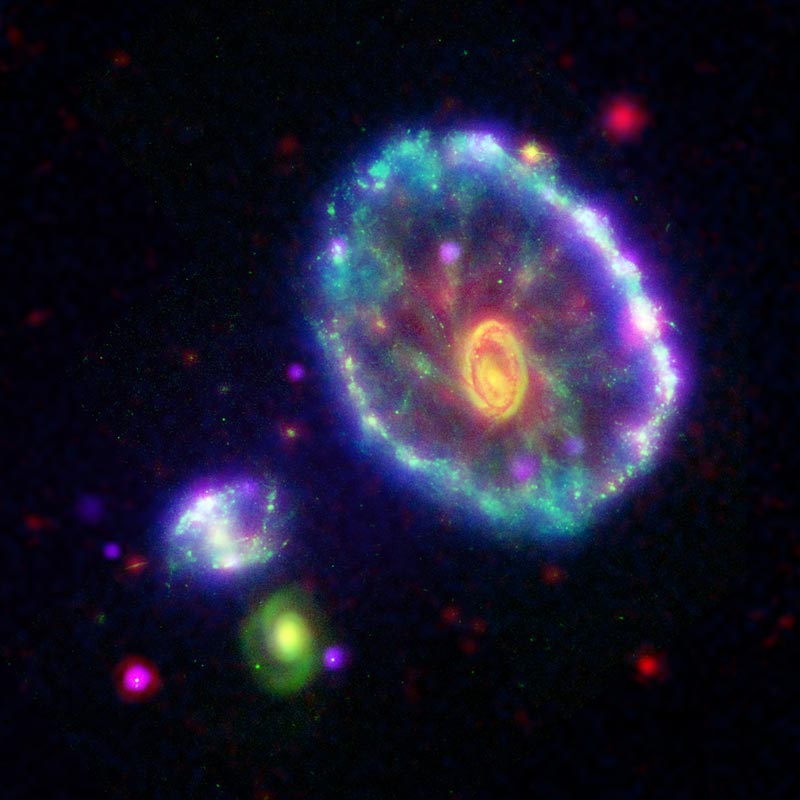Galaxy Formation and Evolution
How did stars and galaxies like our own Sun and Milky Way form and evolve through cosmic history? What is the origin of the super-massive black holes (up to ten billion times the mass of our Sun) that we observe at the centers of galaxies? With about 50 billion galaxies, our observable Universe is full of mysteries that involve physics from atomic processes and interactions between matter and light on the microscopic level, to gravitational forces acting over trillions of trillions of kilometers. Researchers in the Astrophysics group are working on a diverse range of topics, often through international collaborations.
Some highlights include:
- Understanding how the first generation of galaxies formed in the Universe, more than 13 billion years ago, and how they affected the gas in the intergalactic medium during the process of reionization. This is one of the most debated questions in extragalactic astrophysics, and we are approaching it comprehensively by combining supercomputer simulations with observations of the most distant galaxies with the Hubble Space Telescope, and with studies of the hydrogen gas with Australian radio telescopes such as the Murchison Widefield Array.
- Investigating the nature and distribution of (dark) matter in and around galaxies, as revealed through bending of the light from background sources. In addition, we are exploiting gravitational lenses as cosmic telescope in order to provide a sharper and more magnified view of distant galaxies.
- Studying how black holes grow by accreting gas, and how this process fuels powerful jets at the centers of some galaxies that in turn create negative feedback that suppresses star formation in their host galaxies.
Supervisor Profiles & Available Research Projects
Prof Michele Trenti
- High redshift galaxies
- Galaxy formation and evolution
Prof Rachel Webster
- Quasar astrophysics

Cartwheel Galaxy: photograph courtesy of NASA/JPL-Caltech